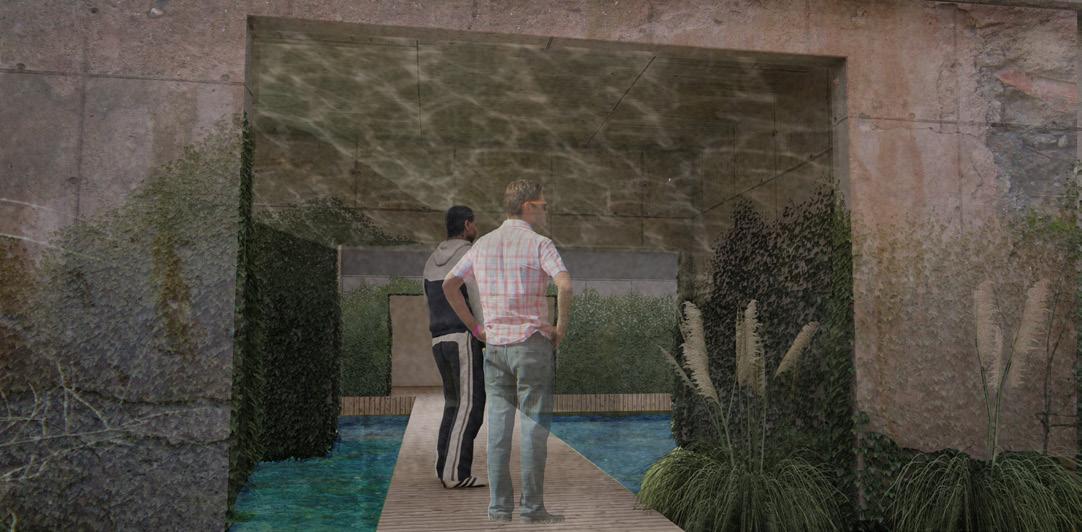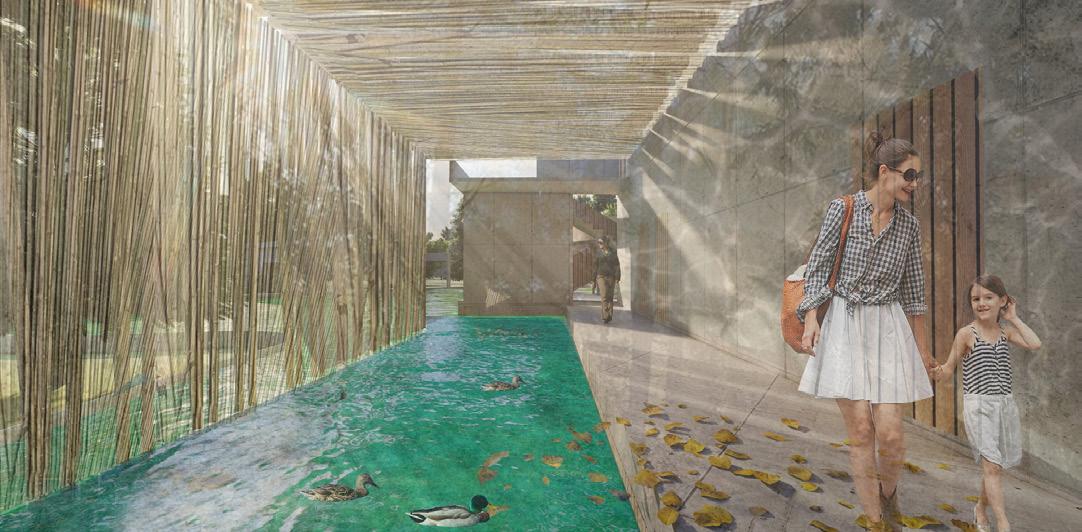
3 minute read
Smirti Jain
Smriti Jain
Let’s Take a Walk
Inspired by the meditative feeling that already exists on the site, the project contains a series of sensory experiences highlighted through light, shadow, water, reflections, sound, and smell that helps people connect and understand the journey of Puerto Rico.
Since this was an adaptive reuse project, we not only adapted the existing buildings, but also the natural elements. One such element is the existing flood plain which helped us divide the site into patches of water and greenery. Historically, the site was a wetland which justified us in giving the site back to nature and reintroducing the wetland. The existing buildings were strategically stripped leaving their structures intact to either blend them into the areas containing water, or to let nature take them over allowing them to blend with the greenery. Additionally, all new structures are pulled two feet above ground to allow the wetland to be unobstructed. This project is an interweaving and connecting of old ruins with new bamboo structures to create a meditative pathway full of sensory experiences.
Igo on a walk with my friends every night without fail, no matter what is going in our lives – a 30 min walk – daily. It helps us stay connected to each other, with nature, the city, and with ourselves.
This was the inspiration when we started working on the project – Let go on a walk in Puerto Rico. The project was inspired by many elements but most importantly focused on one: connections.
There are five senses we humans use to connect with everything around us – sight, sound, smell, taste, and touch and these were used to create a pathway with a series of sensory experiences.
In a way, architecture is not so different from humans. Every building tells a different story, has a life span, changes with time, makes connections, and has a journey of its own. The approach was to take inspiration from our lives and apply it to the project.
The site is in Puerto Rico which has had its share of ups and downs and struggles and healings that made it the unique and beautiful place that it is right now.
The site was a part of a wetland before people illegally acquired it and turned the beautiful place into chaos. This was followed by several hurricanes because of which people abandoned it and left behind a place full of ruins.
This is not much different from any of our life’s journey. We come into this world innocent At some point, we may face huge struggles and feel as if it is the end. Yet we can not deny the fact that it is through these struggles which we grow and turn it into the beautiful unique selves that we become – none of us are perfect but we are beautiful. The same thing happened with Puerto Rico. Just as time heals us, nature took over in Puerto Rico, healed it with time, and eventually turned it into the beautiful place it is now. The streets are not perfect, the sidewalks are cracked with weeds sprouting several feet in front of the soil, buildings have a worn, aged look to them. In general, Puerto Rico today has a very beautiful grungy feel.
It is the connections Puerto Rico has with nature, with those ruins, with the people embracing its imperfections, that make the place so amazing. This was our ultimate inspiration for the project. We kept everything that was on the site intact with minor stripping and additions here and there to blend everything and the result was a pathway – a walk that you can take to understand the place.
It speaks to you with its play of light and shadow. Through the bamboo structures, the reflection of light on water and its patterns on walls, the smell of the moist soil, the sound of moving water, the touch of an old ruined wall with creepers.
This is no different from the walk I take with my friends – this is where they told me where they are from, how they ended up here, what is the scar on the forehead from – little things that help us connect. Because at last humans and architecture both are lost without these connections.












